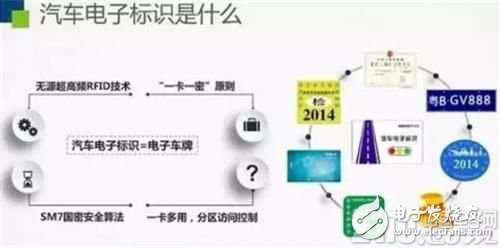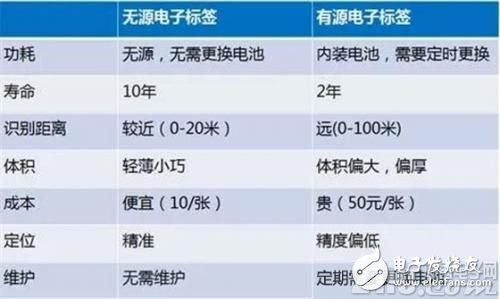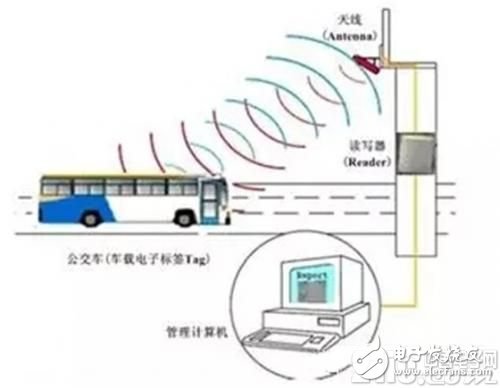The core of the electronic license plate is the electronic tag based on RFID technology, and the RFID electronic tag is divided into two categories: active and passive. The advantages and disadvantages of the two tags are shown in Table 1.
When it comes to smart electronic license plates, many people will be curious. Here, we will give you what science is a smart electronic license plate and the future development trend. At present, the most common positioning and recognition of license plates basically rely on image recognition. After detecting the license plate number, it is compared with the list in the database, but the image recognition is greatly affected by environmental factors, the identification of the license plate is easy to make mistakes, and the image is acquired. Blind areas are often present, and these uncontrollable factors limit the further development of image recognition.
In order to solve this series of problems, intelligent electronic license plates came into being. Intelligent electronic license plates are based on RFID technology, and RFID technology as an emerging non-contact automatic identification technology, and traditional video and image processing license plate recognition technology. Compared with RFID technology, the vehicle identification accuracy is high, it is not easy to be affected by the environment, and there is no blind zone, which can accurately and comprehensively acquire the state information of the vehicle and the traffic condition of the road network. The future development trend will be the way in which electronic license plate recognition gradually replaces traditional license plates.

Figure 1 Automotive electronic identification
The core of the electronic license plate is the electronic tag based on RFID technology, and the RFID electronic tag is divided into two categories: active and passive. The advantages and disadvantages of the two tags are shown in Table 1.
Table 1 Comparison of electronic labels

Considering the service life and usage scenarios of electronic license plates, passive electronic tags have the characteristics of long life, small size, easy installation and low cost, and are more suitable for vehicle installation and use. In the choice of communication distance, UHF UHF 860MHz ~ 960MHz passive RFID electronic tags have the advantages of long communication distance and fast transmission rate, and it is a very good choice for electronic license plate recognition.
Since the prospect of electronic license plate recognition is so broad, it certainly has many advantages and characteristics that are unmatched compared with traditional image recognition technology. Where are the specific basic requirements and technical advantages? Let's simply list a few of the following:
Basic requirements for electronic license plates:Can store data (vehicle model, color, owner information);
The identification tag can be read from a distance, and the distance of the fixed reading device is more than 10 meters;
High reliability, read success rate of up to 99.99% or more;
Can identify a large number of tags at the same time, the maximum is more than 200 per second;
Accurately identify tags in high-speed motion, mobile recognition speeds up to 100km / h or more.
Technical advantages of electronic license plates:Data encryption, a unique algorithm used in the label communication process, which cannot be read by third-party devices;
Easy to install, no special installation tools or materials are required;
The unique human card and garage group matching algorithm can accurately determine the illegally used motor vehicles;
All day, you can work reliably in any weather conditions.
It is precisely because of the advantages and characteristics of electronic license plates compared to traditional license plates, it is foreseeable that in the near future, motor vehicles will gradually replace the current traditional license plates with electronic license plates with electronic tags, so that from the front of the vehicle The electronic license plate, the rear-end license plate recognition, data transmission, vehicle management, data storage, terminal query and other platforms have a very broad construction and development prospects. Figure 2 is a schematic diagram of the entire platform composition.

Figure 2 Schematic diagram of the platform architecture
After talking about the principle and advantages of the electronic license plate, there may be an "old driver" who is beginning to wonder. Is the electronic license plate really practical? Where is the specific application? Next, we will simply talk about the application of the electronic license plate.
Scene 1: Smart Parking SystemSpeaking of most of the current parking lot management, many "old drivers" may have encountered more or less difficulties in parking, expensive fees, no parking spaces, and so on. In order to solve these parking problems, in recent years, the national policy has clearly proposed the application of high-tech such as smart parking systems and automatic identification of license plates. To put it simply, the "wisdom" of smart parking is reflected in: smart looking for parking spaces + automatic parking fees.
So, how do you implement smart parking now? Let's take the most common parking lot. The most important technologies are license plate recognition technology and non-stop electronic toll collection (ETC) technology. Before the vehicle with the electronic license plate enters the parking lot, the intelligent parking system can accurately identify the vehicle identity through the electronic license plate recognition device, record the entry and exit time of the vehicle to accurately charge, and make the vehicle pass quickly without manual parking. When the vehicle stops driving out of the parking lot, the smart parking system will perform short-range communication with the electronic license plate through the license plate identification antenna, and automatically complete the charging process without any driver parking and other charging personnel taking any action.

Figure 3 Smart Parking System
Through the application of smart parking system, the efficiency of passing through can be improved, and the “bottleneck†of traffic at the toll station can be prevented. At the same time, the unmanned intervention charges can be realized through RFID technology, effectively curbing the evasion of parking fees, the negligence of the tollers, and the malpractices. At the same time, reduce the management cost of toll stations and recover the investment in infrastructure more quickly.
Scenario 2: Intelligent Traffic Management SystemRFID technology can be used as an effective means of information collection in traffic dispatching systems and can be applied in traffic dispatch management systems. For example, the application of RFID to the bus yard management system can realize the automatic, accurate, long-distance, non-stop collection of information when the bus with electronic license plate enters and exits the station, so that the bus dispatching system can accurately grasp the real-time dynamics of the bus in and out of the bus parking lot. information. By implementing the system, the management level of the bus can be effectively improved, and the collected data can be researched and analyzed by using the computer, the vehicle usage rules can be grasped, the loopholes in the vehicle management can be eliminated, the intelligent management of the bus vehicles can be realized, and the image of the city can be improved.

Figure 4 Bus Management System
In addition, the use of RFID as a technical means is highly economical, and compared with technologies such as Global Positioning System (GPS), it has the characteristics of convenient installation, strong adaptability, low cost, and no need for vehicle modification. At the same time, special dispatching and management can be carried out for special service vehicles such as garbage transport vehicles and dangerous goods transport vehicles. Through the electronic license plate installed on the vehicle, an identification device is placed at the monitoring point of the specific road section to monitor whether the vehicle is traveling according to a prescribed route, and the position of the accident vehicle can be located in time when an unexpected situation such as a leak occurs.
Through the introduction of the above two practical application scenarios, we have a more intuitive and clear understanding of the electronic license plate. Figure 5 is an example of an electronic license plate in a specific industry application.

Figure 5 Application of electronic license plate in the industry
In the future, with the advancement of technology, from smart wear to smart travel, the future smart city will be closer and closer to us, and people's travel will become more convenient, let us look forward to the beautiful science and technology brought to us. The future.
PD/QC Charger
Multiple safety protection: high -quality components and advanced circuit technologies, light -proof and surging protection design, thinking that home electricity uses safety protection. USB power wheels also have overvoltage, overload, overload and short -circuit protection. Convenient and practical: Unlike the traditional plug -in USB charger, it can be flexibly used for a long distance distance, avoiding the problem of excessive load plugs and getting away from the socket.
Pd/Qc Charger,Adaptive Fast Charging,Multi Port 1000W Charger,Type C Pd Qc Charger
shenzhen ns-idae technology co.,ltd , https://www.szbestchargers.com